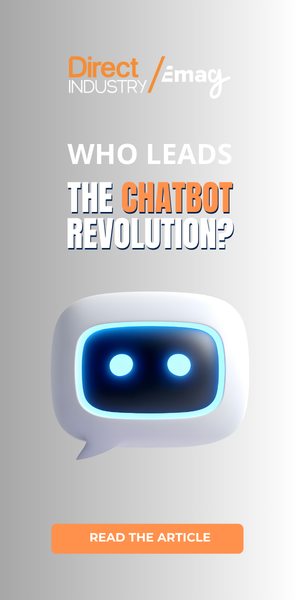The promises of AI and generative AI are colossal. They are said to be capable of almost anything starting with boosting productivity and competitiveness. And yet, concrete results are slow to emerge. According to a MIT study we have already reported on, 95% of companies that launched AI POCs are dissatisfied. Why? And how can companies actually make money with AI?
In a hurry? Here are the key notes to know:
- 95 % of AI pilot programs don’t deliver ROI: Only ~5 % of companies are already profitable with AI.
- Winners embed AI deeply: They restructure processes, deploy AI agents at scale, and integrate AI into core operations.
- Scalable, real-use cases matter: Success comes from tackling well-defined problems (automation, efficiency, new services), not from experimenting for AI’s sake.
- Leadership and strategic clarity are key: Top management drives AI adoption, aligning it with long-term vision and business model.
- Substantial payoffs are possible: Top-performing companies report productivity gains, growth acceleration, cost reductions, and increased patent activity, sometimes generating three times the value of average firms.
Last week, we were at the AIM trade show held at the Vélodrome Stadium in Marseille—the city where our newsroom is based. Over two days, a summit on AI took place, co-organized by La Tribune and BFM Business, two major French business outlets (with our media DirectIndustry as a media partner).
The program featured discussions, debates, and conferences for business leaders on pressing AI topics: adoption, regulation, sovereign AI, and of course, competitiveness. Heavyweights from industry were present: Meta, Google, MistralAI, Salesforce, Airbus, Total, along with influential figures like Luc Julia and Laurent Alexandre, emerging European AI companies, and public officials such as France’s new AI minister Anne Le Hénanff and former budget minister Bruno Le Maire.
One of the most highly attended sessions focused precisely on competitiveness gains—or, in other words, how companies can make money with AI.
The Promises of AI
The sector is convinced, AI holds significant potential and can meaningfully contribute to business development. According to Sébastien Missoffe, Managing Director of Google France,
“The vast majority of companies today revisit the problems they’re trying to solve and look at how AI can support them. That’s true for very small businesses, countless SMEs, and we also see it with large corporations.”
He cites CMA CGM, which works with Google on a challenge involving more than 650 ships—optimizing maritime routes by running AI models to determine the most efficient commercial paths.
According to Sébastien Missoffe, the opportunities are immense:
“The curve right now is very impressive, and we will continue to see—and be able to measure—this acceleration in the years ahead.”
This is supported by a study published by Google in partnership with economist Antonin Bergeaud, showing that AI-driven innovation could add up to €90 billion in value to French GDP by 2034.
But there is another widely shared observation among experts and companies: despite their enthusiasm for AI, most organizations—large groups and SMEs alike—are still struggling to capture the promised productivity gains. A MIT study confirms it.
Is there an AI Bubble? Read our story to know more
The MIT Study: Explanations
We covered this study when it was released a few months ago, and it continues to make waves. According to the Massachusetts Institute of Technology, 95% of organizations see no—or very limited—returns from their internal generative AI pilot programs, despite heavy investment. Skepticism about OpenAI’s or Google’s products and their ability to help companies increase revenue and profit—even in the medium or long term—is growing. And not only among AI skeptics. This shift intensified after GPT-5, OpenAI’s latest LLM, failed to meet the lofty expectations set by Sam Altman himself.
Why is this happening? AI promises big returns, so why aren’t companies seeing them? According to Luc Julia, inventor of Siri and now Chief Scientific Officer at Renault Group:
“Companies are disappointed because the productivity you’re supposed to get from AI isn’t working as well as expected. But that’s normal. This innovation has moved incredibly fast. Typically, innovations take five to ten years to materialize—here, it’s been just one. We’re still in the innovation phase.”
For Anne Bouverot, Special Envoy of the French President for the AI Summit and Co-Chair of the Council for Artificial Intelligence and Digital Technology, companies are interested in AI, but they don’t know where to start or where to invest more to scale up:
“In companies, we see a lot of individual adoption—everyone uses ChatGPT or Claude or Gemini, and it helps us privately and professionally. But to scale and get ROI, you must account for the fact that AI changes how people work together, how data flows between customers and suppliers, and how finance works with marketing. This means changing processes, ways of working, and training. It requires an internal transformation project, and we’re still taking the time to put use cases in place.”
Read also
AI Adoption in Industry Lagging Behind
For example, in the industrial sector, AI adoption is less advanced than in tech or finance, but POCs do exist. According to François Soubien, Global CEO Consulting Group at Talan:
“In industry, we’re at about 67% AI adoption, versus 89% in financial services. Half of industrial companies today are stalled on investment because they consider ROI too uncertain.”
A key challenge arises when POCs are successful: how to scale them?
“For major industries, the real problem is scaling. Not the existence of technology, not operational willingness to change—scaling, and top-management support.”
Time is therefore needed before efforts bear fruit. But some speakers at the summit argue that results are already emerging—and they can be explained. What’s the secret recipe?
The 5% That Are Already Winning
If the MIT study cast a chill—showing that 95% of companies aren’t seeing results—the remaining 5% are already making money with AI, explains Sylvain Duranton, Global Leader of BCG X, based on BCG’s research:
“Our numbers show that 5% of companies today are making a lot of money with AI. The important figure is that 35% will soon do so. In total, 40% are making progress. So we’re seeing real momentum.”
What do these companies gain in financial terms or value creation? Duranton admits it’s difficult to distinguish correlation from causality, but he notes that companies in the top 5% generate three times more value than the average, and file three times as many patents.
“They also achieve nearly twice the growth of the rest of the sample. Clearly, something is happening.”
Who Are These Companies?
Who are these top-performing companies benefiting most from AI deployment? The first characteristic, says Duranton, is heavy investment:
“Where they’ve deployed AI, they’ve deployed far more than others. They see performance gains of 6%—whether in growth and revenue or cost reduction. And they expect that figure to rise to 12% within three years.”
What do they do differently? Yes, they invest more—but more specifically, they invest in agents: systems capable of reasoning, solving problems, and taking actions:
“Nearly half the companies in our sample have begun deploying agents.”
Another key factor: they work deeply on processes and organizational structures. It’s not just about giving employees access to an LLM or assistant; it’s about redesigning business functions around AI—or launching new customer offerings.
“They truly rework a business process or function and rebuild it entirely around AI.”
The good news: there is no sectoral destiny. Even if industry lags behind tech, BCG believes this transformation capability is within reach for all companies.
Read also
Recommendations
So, how can companies successfully deploy AI? What winning strategies actually deliver ROI? Here is a non-exhaustive list of recommendations shared by the experts we interviewed.
1. Use Cases and Leadership
First, companies must define and prioritize use cases. This is fundamental. AI must serve a purpose—solving a concrete problem, whether improving processes, supporting decision-making, creating new services, or acquiring customers. That requires knowing the available tools but also strong leadership from top management. Executives must ask why they’re using AI and how it fits their strategic vision. As Sylvain Duranton puts it:
“AI is a C-suite topic, not just a technical one. Companies that succeed have executive committees that are 12 times more committed than others.”
For François Soubien (Talan), it requires the ability of leaders to envision what their company should look like in the future:
“A leader must be able to describe what their business will look like before starting the effort—and anticipate business-model changes.”
This, experts agree, is how companies can put themselves on a successful path to competitiveness.
2. Deploy AI Agents
As mentioned earlier, companies benefiting the most from AI have deployed agents at scale. Yet despite growing interest, agentic AI is still not widespread—even though its productivity impact is significant.
IBM is a telling example. In 2025, the tech giant reported €4.5 billion in gains thanks to AI. The American giant launched a global program where it acts as Client Zero of its own tools, reviewing all applications and business processes to identify what can be removed, simplified, or automated through AI. The CEO’s goal: make IBM the most productive company in the world thanks to AI—especially agents.
To do that, they deployed agents in HR, explains Xavier Vasques, VP and CTO of IBM France:
“HR teams are bombarded with questions all day, so they can’t focus on value-added work like transformation, coaching, or career management. We wanted to automate that. Once we deployed agents, 94% of questions and requests were automated.”
In six months, agents completed roughly 800,000 transactions, from leave management to salary increases.
“This means 40% of the HR operational budget is reduced. IBM’s HR cost has dropped by 40%.”
Agents are also accelerating R&D:
“In semiconductors, creating sustainable materials used to take 10 years and $10–100 million in investment. With these tools, it takes one year and $1 million to discover three new materials.”
Salesforce also deployed virtual agents for its customers, called AgentsForce. According to Emilie Sidiqian, Managing Director of Salesforce France:
“You define an agent like a job description: what it can do, what it can’t, which datasets it will use. Like a colleague, it can write emails, chat through channels like WhatsApp, or use voice. Then you decide whether the agent augments an employee or handles tasks independently.”
Contrary to common belief, it is often small businesses—at least in France—that adopt agents the fastest. Take Fermob:
“As a small manufacturer like Fermob, your customer service may be just two people handling nearly 400 monthly complaints. It’s impossible. So SMEs have found agents to be an effective way to support growth and ease employees’ workloads.”
Here, the agent takes over to boost the company’s productivity.
3. Innovate: Fail Fast
How do you measure ROI for these projects? AI can improve existing processes (better, faster, cheaper) or enable innovation (new services, new revenue streams). But how do you estimate ROI ahead of time? Business unit leaders bring many generative AI use cases. Demand is high. But the ROI question slows everything down.
According to Stephan Hadinger, Director and Head of Technology at Amazon Web Services, which supports companies in AI and LLM deployment:
“For projects improving existing processes, you can calculate ROI upfront, which helps justify investments. But for innovation projects with new services, there’s no magic formula. Until a product is in customers’ hands, you can’t know the ROI.”
For him, the key is failing fast—building a first version quickly, putting it in users’ hands as soon as possible, and seeing what sticks. Then iterate rapidly.
Valuation and Market Pressure
Even if broad ROI is not here yet, there is consensus: with accelerating agentic AI and rapid advancements, companies that fail to adopt AI may not survive. In France, Patrick Martin, president of employer federation MEDEF, warns:
“AI must be seen as an opportunity—and a necessity. No industry considers AI irrelevant. It will be highly discriminatory between those who succeed and those who fall behind.”
This is already visible in valuations. According to Mathieu Gross, Partner at Messier & Associés:
“In the acquisition market, AI is central. No deal happens without an AI risk assessment.”
Everyone seeks AI-based competitive moats that cut costs massively. That directly impacts valuations:
“Roughly two-thirds of deals—mergers, acquisitions, or investments—are driven by AI. And valuations clearly show winners and losers.”
The Need for Fast ROI
As always: companies will have to adapt or die. Notably, several French AI companies now focus on delivering rapid ROI—providing a solution to the ROI problem that companies find so frustrating.
This is the case for H Company, which builds AI agents. Gautier Cloix, the CEO, explains:
“We must sell speed. We must sell results. What matters is delivering fast ROI. Without quick ROI, business leaders may be curious about our tech—but they won’t buy.”
This could give these companies a dual advantage: greater differentiation and competitiveness in a market dominated by American firms, and the adoption of sovereign European tools that reduce dependency on U.S. providers.
Interested in European tech? Read our story






![Image [Buying Guide] How to Choose the Right Protection Gloves?](/wp-content/uploads/sites/3/Gloves-1-320x213.jpg)



